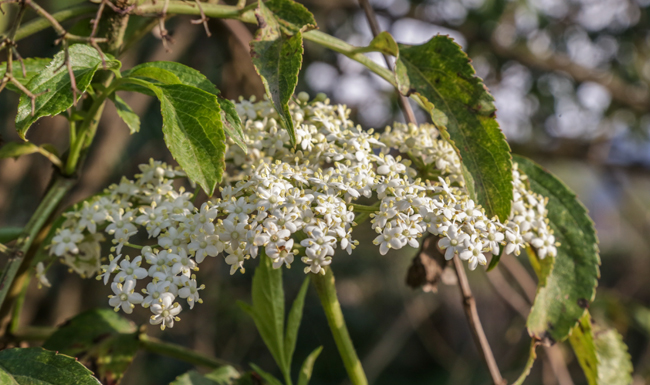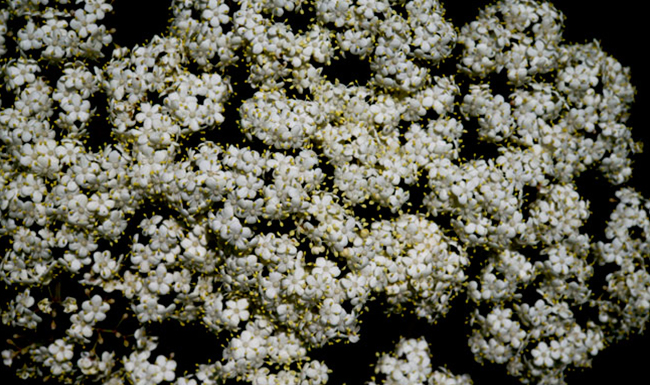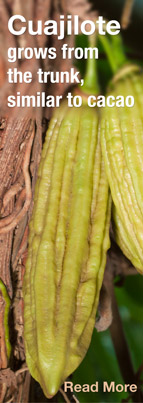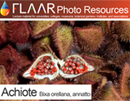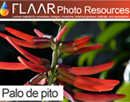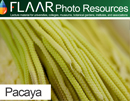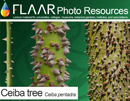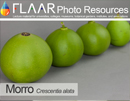When time and funding permit, each flower (each plant species) will have its own page, and its own PDF, and eventually its own PPT so that professors and students have plenty of material on Guatemala (and Honduras, etc) to study.
Heliconia adflexa, Coban, Guatemala, Hotel Monja Blanca, FLAAR, by Nicholas Hellmuth
This space is for flowers
we have recently found and photographed.
|
| Share
|
Sauco, Sambucus mexicana, is an underutilized common plant in the Central Highlands and Western Highlands of Guatemala, with edible flowers and edible berries, plus considerable medicinal propertiesPosted June 10, 2016, after again photographing Sauco in Western Highlands during a long field trip Potential to improve diet and health among Mayan communities of Guatemala Two thousand years ago there were no Paiz or Supermercado La Torre; there were no highways to bring in food in 18-wheeler trucks. Yet there were more millions of Mayan people living in Guatemala than today! What made it possible to have more people in AD 600 than in AD 2016? 2000 years ago there were hundreds upon hundreds of edible plants used, with different species in each eco-system. Today the agriculture produces primarily maize, beans, squash, and a few other plants: the rest is 3-liter bottles of Cola and junk food in plastic and aluminum bags (which litter every trail to every tiny aldea and communidad in the entire country). Diabetes is the most common disease (due to consumption of GALLONS of cola since childhood, and all the chemical-laced junk food: sugar, salt, flavorings). We at FLAAR have spent the last several years making lists of all the edible and utilitarian plants of the Maya. Our list is far more extensive than lists in quoted monographs and scientific peer-reviewed journals. Our “peers” are the over 300,000 people who read our www.maya-ethnobotany.org every year! If funding is available we would like to make our documentation available to the Mayan people, in their own K’iche, Kaqchiquel, Q’eqchi’, Mam languages, and other Western Highland, Central Highland, and other parts of Guatemala, including Xinca and Garifuna languages. Underutilized Edible plants of the Mayan world Sambucus mexicana, Sambucus nigra and Sambucus canadience are synonyms. Blue elderberry. We even have one of the elderberry species on our family farm in the Ozark Mountains of south central Missouri. Evidently you can also eat the flowers but normally people consume the ripe berries (in jelly or other preparation; you don’t tend to eat them in a bowl like blueberries or raspberries). Sauco is everywhere, from Central Highlands through Western Highlands
Driving from Guatemala City towards Los Encuentros (turn off to Chichicastenango) you find lots of sauco. Around Quetzaltenango, sauco in almost every field. Plus in many other places in the Central Highlands and Western Highlands, plus in Q’eqchi’ Mayan areas. It would help to have a project to systematically record precisely in how many eco-systems of Guatemala sauco is common. Sauco is very common, but usually “wild” and not cultivated Sometimes you find sauco as a living fence. Other times it is growing around houses, randomly. Usually it is left in fields that are otherwise cut for milpa (so sometimes it is spared from the slash-and-burn Mayan maize cultivation system). But this is an extremely common plant. I would call it a small tree or large bush (botanists will have their preferences). It blooms for several months, especially May and June. In June you can begin to see the berries but they are not yet ripe until later in the year. As with many Neotropical plants, parts of toxic even though parts are edible Scores of plants in Guatemala, Mexico, Honduras, etc have edible parts and toxic parts all on the same plant. Sometimes a part of the plant is toxic with young but fully edible when ripe. Other times it’s the other way around. With sauco the berries have to be completely ripe. Sauco is medicinal throughout Mexico and Guatemala Francisco Hernandez, already in the 16th century speaks about the medicinal benefits of Sauco (Relaciones Geograficas). In the 17th century Francisco Ximenez mentions the medicinal benefits of sauco. Sauco also produces a dye colorant In northern Mexico, among the Coahuilla Indians, sauco is used as a dye colorant for dyeing basketry (Barrows 1967). Sauco also produces a colorant in the Choco area of Colombia (Pino Chala et al 2003). But this is a different plant: Solanum aff. Incomptum. It will be useful to check if Mayan Sauco was used as a dye colorant; it is not listed in the book on dye colorants by Olga Reiche (2014). Not one Sambucus species is listed for the northern Lacandon Maya in the impressive coverage by Suzanne Cook (2016), so it seems to prefer Highland eco-systems. Sauco is also beneficial to local wild animals and birds Sauco berries and leaves are popular food for deer, squirrels, raccoons, opossums and birds. Wild creatures can evidently not be affected by what is toxic to humans (Charlebois et al. 2009: 30-31). Bibliography We are preparing a comprehensive bibliography on sauco.
|
Parque Nacional Yaxha, Nakum and Naranjo
Carnivorous Plants
Plants of Municipio de Livingston, Izabal
- Acrostichum danaeifolium, giant leather ferns
- Bellucia Pentamera
- Bibliography on Grias cauliflora
- Bibliography on Licania platypus
- Bibliography on Mangle negro (Avicennia germinans) L.
- Bibliography on Montriacardia arborescens
- Bibliography on Typha domingensis and Thypha latifolia
- Conocarpus erectus, white mangrove
- Edible Wetlands Plants, Hotel Tortugal
- Heliconia latispatha
- Heliconia wagneriana
- Manicaria saccifera Confra palm
- Neotropical trees of Guatemala need protection
- Nymphoides indica, waterlily flowers
- Pachira aquatica, zapoton
- Bibliography on Pithecellobium Mart., Neotropical trees of Mesoamerica
Ecosystems, Wetlands Aquatic Plants
Smartphone Camera Reviews
Bushes and small trees
Fungi and Lichens
Orchids
- Bibliography Bletia purpurea, aquatic orchid
- Bibliography, Epidendrum radicans
- Bibliography on Habenaria Orchids from Yaxha
- Bibliography, Lycaste virginalis var. alba.
- Bibliography, Macroclinium bicolor
- Bibliography, Prosthechea cochleata
- Bibliography Sobralia macrantha, Lirio de San Juan
- Bibliography, Sobralia xantholeuca
- Bibliography on Terrestrial shade orchids from Guatemala
- Bibliography on Terrestrial sunny orchids from Guatemala
Botanical Terms
Maya and Aztec flavorings for cacao, cocoa, chocolate
- Achiote, Bixa orellana
- Bibliography on Achiote, Bixa orellana
- Bibliography on Esquisúchil, Bourreria huanita
- Bourreria huanita
- Cassia grandis, bucut
- Chile Chocolate
- Chile Chocolate (Capsicum annuum var accuminatum)
- Chiranthodendron pentadactylon
- Cymbopetalum penduliflorum
- Guazuma ulmifolia
- Haematoxylum brasiletto
- Piper auritum, hoja santa
- Piper species
- Quararibea funebris
- Sterculia apetala, castaño
- Tagetes sp., Marigold
- Talauma, a variant of Magnolia
- Vanilla orchid
- Virola and nutmeg
Cacao, cocoa, chocolate
Consulting cacao & Theobroma species
Tobacco Ingredients of Aztec & Maya
Trees of Mesoamerica
- Bibliography on Acacia dolichostachya, Wild tamarind
- Bibliography, Bellucia costaricensis
- Bibliography, Bucida buceras
- Bibliography on Coccoloba belizensis Standl.
- Bibliography on Cojoba sp. and Cojoba arborea
- Bibliography, Ficus.
- Bibliography on Haematoxylum campechianum and H. brasiletto
- Bibliography on Hibiscus pernambucensis
- Bibliography on Ipomea murucoides
- Bibliography on Lacmellea standleyi, lechemiel
- Bibliography on Leucaena leucocephala
- Bibliography on mangle rojo (Rhizophora mangle)
- Bibliography on Manzanillo, Alseis yucatanensis Standl.
- Bibliography on Matilisguate, Tabebuia rosea
- Mangrove swamp Trees
- Bibliography on Ruagea insignis
- Bibliography on Pterocarpus officinalis
Bombacaceae, Bombacoideae
Tropical Fruits of the Maya
- Avocado Hass
- Bibliography on Coloc, Talisia floresii
- Bibliography, Dichogamy of avocado species
- Bibliography on Guayo, Talisia olivaeformis
- Bibliography on Laetia thamnia, Bakelac
- Bibliography on Maracuyá, Passiflora quadrangularis L.
- Bibliography on Punica granatum L., Granada
- Cashew
- Cuajilote, Parmentiera aculeata
- Granada
- Guanabas and Annonas
- Guava, Guayaba, Psidium guajava L
- Introduction to Papaya
- Nance a fruit of prehispanic Guatemala
- Passion flowers and fruits
- Passion flower, giant fruit
- Talisia floresii, Sapindaceae
- Carica Papaya Bibliography
Tropical Nuts
Spices, condiments, food coloring
Medicinal Plants
- Aristolochia, The largest flower in Guatemala, Bibliography
- Asclepias curassavica, bibliography
- Bibliography on Ciricote, Cordia dodecandra
- Bibliography on Contrahierba, Dorstenia contrajerva
- Bibliography on Falso hibisco, Malvaviscus arboreus
- Bibliography on Huele de noche, Cestrum nocturnum
- Bibliography on Lirio araña, Hymenocallis littoralis
- Bibliography on Roble Prieto, Ehretia tinifolia
- Bibliography, Tithonia diversifolia
- Canak
- Calliandra general info
- Guava, Guayaba
- Magnolia and Taluma
- Mayan medicinal plants
- Piper
- Tecomasuche, Coclospermum vitifolium
- Bibliography on Sufricay, Malmea depressa
- Bibliography on Wigandia urens
Underutilized edible plants
Edible Plants of the Mayan World
- Acacia, subin, bullhorn acacia
- Bibliography, Annona muricata
- Bibliography, Annona purpurea
- Bibliography, Annona reticulata
- Bibliography on Chipilín, Crotalaria longirostrata
- Bibliography on Chirimoya, Annona squamosa
- Bernoullia flammea
- Canna indica, tamale wrap
- Cuchamper, Gonolobus
- Guava, Guayaba
- Bibliography, Gonobolus sp.
- Bibliography, Parmentiera aculeata
- Pacaya palm Chamaedorea tepejilote
- Split leaf philodendron, Monstera deliciosa
Plants and trees used to produce incense
Utilitarian Plants
- Bibliography, Acacia farnesiana
- Bibliography on Aechmea bromeliifolia
- Bibliography on Agave americana
- Bibliography, native Agave species from Guatemala
- Bibliography on Anthurium crassinervium (Jacq.) Schott
- Bibliography on Balsa, Ochroma pyramidale
- Bibliography on Bamboo, Guadua longifolia (E.Fourn) R.W.Pohl
- Bibliography, Crescentia alata
- Bibliography, Crescentia cujete
- Bibliography on Hule, Castilla elastica
- Blepharidium guatemalense, irayol blanco
- Crescentia alata, Crescentia cujete
- Tecomasuche, Coclospermum vitifolium
- Bibliography on Coxte, Colubrina arborescens
- Bibliography on Madre cacao, Gliricidia sepium
- Bibliography on Tillandsia usneoides
















